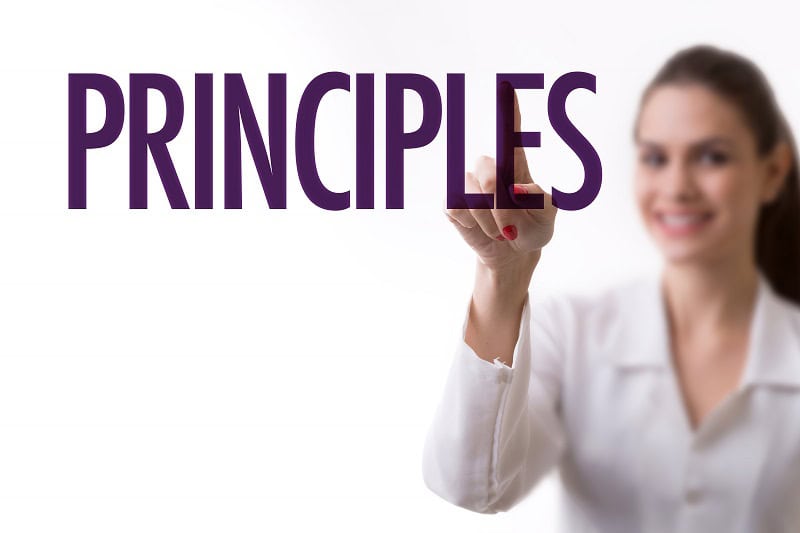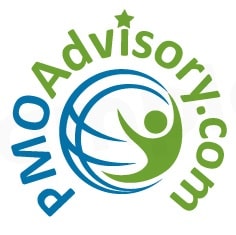
In the current COVID-19 environment, things feel different, look different, and ARE different. The U.S. unemployment rate is above 15% (the highest since the Great Depression), businesses are permanently closing their doors, people are staying home to flatten the curve, and Mother Earth is healing. These changes encourage introspection and influence us to optimize the value of life, and businesses are no exception. Changes create new environments. New environments encourage new ideas. New ideas come to life by implementing plans in a way that delivers the intended value.
As businesses adjust to the “new normal” and develop new ideas on how to operate, it is important to understand the plan to achieve intended benefits. A good start is to build a framework that supports the various disciplines across the organization and has the flexibility to consistently respond to change, known as strategic business execution. It is with the strategic business execution framework that the organization lives in an ecosystem of supportive culture, people, disciplines, and processes that continually enables the realization of intended benefits. With minimal signs of pre-COVID norms, this is the perfect opportunity for organizations to update their operating models to respond to continuous change. Finding the right balance of people, disciplines, and processes to effectuate organizational change is unique to each organization. Consider portfolio management as a go forward approach to finding the right balance for your organization and drive the attainment of continually updated organizational goals.
Goals need well-defined plans for achievement, often resulting in change. Strategic change begins with a strategy, known as the “thinking”, and is commonly achieved through the “doing” of Organizational Project Management, inclusive of project, program, and portfolio management. Portfolio Management is associated with selecting, prioritizing, monitoring, controlling, and resourcing “the right work” in order to implement organizational strategy through the execution of programs and projects. To fully realize the intended benefits, understand that it is the strategic business execution framework that determines success by filling the gaps within organizational change, organizational development, core disciplines, and integrating processes. It is through Portfolio Management that the execution work is consistently aligned to strategic objectives.
As organizations are forced to reprioritize their work in response to the impacts of COVID-19, it is a good time to build an ongoing sustainable process for updating, monitoring, and controlling their portfolios of work. To achieve success, it is important to focus on the eight key principles of portfolio management when navigating the everchanging environment.
Strive to achieve excellence in strategic execution
Strategic business execution is a framework that solves complex strategic challenges and delivers value otherwise not achievable through strategy implementation or project management discipline. To achieve excellence in strategic execution, you must first address the gap between strategy implementation and project management discipline. The most widely accepted method of achieving strategic change is organizational project management. Portfolio management is a discipline that enables organizations to make optimal investment decisions and achieve execution excellence by “doing the right work” while program and project management take a more tactical approach by focusing on “doing the work right”. In other words, projects and programs can complete successfully while also keeping the organization from achieving objectives. The portfolio management piece ensures that the selected projects and programs are continually aligned with strategic objectives. When changes such as COVID-19 impact the business, goals and objectives may change, resulting in termination of projects / programs that are no longer aligned to strategic objectives.
What good is a strategy if the implementation is unsuccessful? A holistic view of the business, from goals to planning to execution, need to be assessed and updated to reflect the desired outcome. The strategies to arrive at the desired outcome may consequently change. In these times of uncertainty, a disciplined framework inclusive of risk mitigation, dependency management, and strategic alignment, will help businesses determine what the “right work” is. A key question to test whether the organization is well positioned for successful strategic execution is, “When someone looks at the content of the portfolio, can they tell by the components what strategic objectives are?” Once the portfolio components are aligned with the strategic objectives, the organization can feel confident that optimal investment decisions have been made and that components will deliver intended value.
Enhance transparency, responsibility, accountability, sustainability, and fairness
In times of uncertainty, transparency is paramount. Employees look to leadership for guidance and direction. Employees want to do their part to keep the business going and ensure their placement within the organization. It is good practice to over communicate through formal communications, such as all employee calls and broadcasts but most importantly through governing bodies. The PMO is closest to the broad base of employees and frequent information sharing builds trust at the portfolio level. This legitimizes portfolio decisions and promotes buy-in when otherwise are not supported.
Balance portfolio value against the overall risk.
Covid-19 exemplifies the devastating impact that risk can have throughout the organization, internal / external and known / unknown. Seemingly overnight, risks can impact portfolio value if the portfolio components are not balanced. If the components weigh too heavily on risky components, or components that no longer contribute to goals and objectives, the portfolio itself is at risk for failure. It is important that organizations incorporate lessons learned into their recovery efforts.
Ensure that investments in portfolio components are aligned with the organizational strategy
Just days after corporations finalized their 2020 execution plans, our current environment pressed the reset button. Organizations are reexamining who they are and the direction they want to go. New goals and objectives will prompt business leaders to build and implement a sustainable continuous alignment plan. As organizations recraft the strategy, they should rebalance the portfolio components to align with the strategy. Typically, the Portfolio Manager will pull together a complete inventory of work and will work with executives to determine which programs and projects support the strategy and are added to the portfolio versus those that do not support the strategy and are cancelled. For Portfolio Managers, continuous alignment activities are the key to achieving organizational goals and objectives.
Obtain and maintain the sponsorship and engagement of senior management and key stakeholders
The environment today has company’s running with skeletal resources. For employees that have not been impacted by reductions in force, they are competing for what little resources are left. When building out or restructuring the portfolio, the success of the portfolio is highly dependent on the portfolio manager’s ability to maintain sponsorship and engagement of key stakeholders. For best results, build sponsorship and stakeholder engagement into the strategic business execution framework and demonstrate how their participation is contributing to organizational goals.
Exercise active and decisive leadership for the optimization of resource utilization
Organizations are reacting to resource reductions and trying to figure out the go forward approach for optimizing the utilization of resources. When assessing the current state, determining the capability and capacity will enable leaders to make trade-off decisions.
Foster a culture that embraces change and risk
We are experiencing one of the largest modern world pandemics and it is changing the way we live, personally and professionally. We are required to avoid physical interaction by social distancing rules alongside other modified social norms. The same will hold true for organizations as the primary resource that enables success is human capital. Change and risk are inevitable so be proactive by fostering a culture that embraces the change, mitigates risk, and protects human capital.
Navigate complexity to enable successful outcomes
When responding to disaster situations, expect higher levels of complexity to navigate. People become uncomfortable with the unknown and react differently times of uncertainty. Often there will be incomplete data, unknown dependencies, and unavailable resources, just to name a few. A structured approach can make highly complex situations a little easier to digest. Ultimately, the goal is to have a reliable and adaptable system that validates the most costly investments, your portfolios.
As businesses begin to implement their return to office plans and the economy wheels churn once more, a key theme will be building go forward plans that support continuous change. Take advantage of the new perspectives that Covid-19 exposed your organization to and create an ecosystem that values and nurtures change. Fostering a culture that embraces change and risk is perhaps the most valuable portfolio management principle in the current environment. Once this principle is established, you can add value to the organization by continuously optimizing the investments by leveraging the additional seven principles of portfolio management.

Alice Hamlin
Portfolio Management Professional (PfMP)
Driven Portfolio Manager who believes in the value of selecting, prioritizing, monitoring, and controlling the right work to achieve organizational goals. I am a high energy, experienced Program and Portfolio Manager, passionate about working with Business Executives continuously as we align execution work to achieve strategic objectives. Versed in managing integration, consolidation, and organizational transformation initiatives that span business functions with an excellent sense of collaboration, commitment, trust, fairness, and loyalty. A veteran of the financial services industry, my exposure to the management of project, program, and investment portfolios keeps me focused on opportunities to continuously optimize all types of investments.
